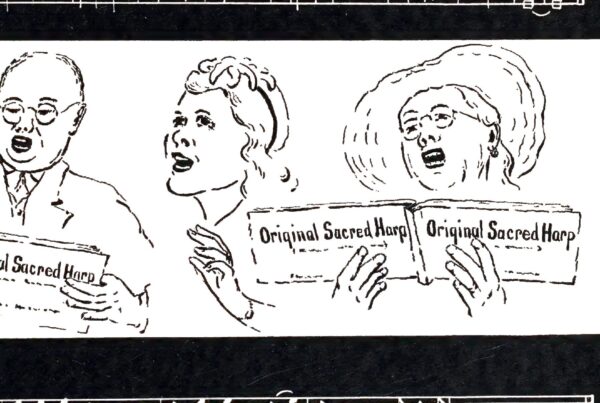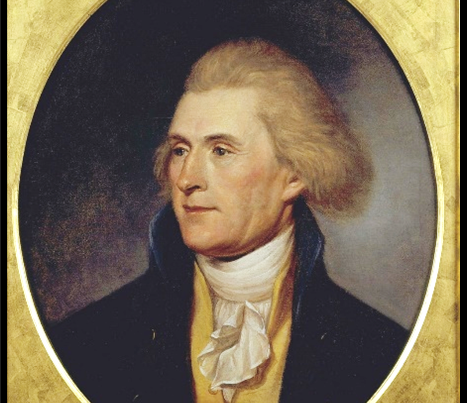White Cargo: The Forgotten History of Britain’s White Slaves in America, Don Jordan and Michael Walsh, NYU Publishing Co., 2008, 431 pages. 978-0814742969.
Where’s my reparations payment!
If Ta-Nehisi Coates has provided the ideas behind John Conyers’ House Bill HR 40 for slave reparations to blacks, then Jordan and Walsh can provide the same for everyone else. For the truth of history, which every indoctrinated schoolboy doesn’t know, is that a great number of American colonial immigrants from England, Scotland, Ireland, and Germany were slaves in all but name, well before black slavery became established in the United States.
The pebble in history that eventually became the avalanche of slavery was set in motion by Henry VIII in the 16th century when he closed the monasteries. The men and women who could find no position in society always had the monastic life for support. There they had sustenance and respect, and celibacy kept them from multiplying dependents. With this safety valve removed, the “sturdy beggars” and “wandering poor” multiplied. By the end of that century, in 1590 (in the reign of Elizabeth and the heyday of Shakespeare), parliament enacted a law to make parishes support the “impotent poor” (the old and the sick) and allow the Privy Council (a group of about 40 advisors to the King) to transport vagabonds, actors, and sturdy beggars to the American colonies (page 30).
The important thing to ask about “transportation” is: Who is authorized to transport? and Who is to be transported? Jordan and Walsh give the date of 1590, with the Privy Council authorized to transport vagabonds. But another source (The Life and Achievements of Sir John Popham, 1531-1607 by Douglas Walthew Rice, page 232) says the Privy Council, on the vote of six of its 40 members, was authorized by the Vagrancy Act of 1597 to transport “gypsies,” extended in 1598 to include “wandering souldiers and Mariners, which will not settle themselves to work.” Our authors also give the date of 1615, when the Privy Council was further authorized to transport convicts (page 70). Then in 1619 the King could transport convicts on his own authority (page 71). In 1617 (remember, just 10 years after the founding of Jamestown in Virginia), councilors from 100 parishes met in London to discuss the problem of street children, and apparently without clear authority in the next year began the roundup of street children for the colonization of America. After a second sweep of children on Christmas Eve, 1619, the people of London complained and the Privy Council formalized their forced transportation of children, which duly took place for the third time, in the spring of 1620 (page 84).
I provide this fuss about dates because it illustrates a very important difference between our English forebears and ourselves. “Who could do what to whom” in those days was controlled mainly by custom, and any departure from custom was met with suspicion; today this power is held by government at all levels, and nearly anything with the label of “law” is simply obeyed. We obey because we think that a democratic process authorized the law, even when the “law” is passed by representatives who haven’t read a single page of it, and even when the “law” is just a command from an unelected agency. Also, in view of the fact that the police did not exist in England until 1829 (and then only in London), our modern fear of fine or imprisonment is a bit livelier.
But in either case – both then and today – the driving force is either economics or political power. For example, the person most responsible for the transportation law of 1590 was Sir John Popham, who held a charter from King James I (yes, the one who authorized the Bible of that name) to colonize north of the 41st parallel in America (that is, about Maryland and southern Pennsylvania): He needed colonists (page 34). The roundup of children was made desperate by the creation of the tobacco industry (page 70) in 1613 by John Rolfe (the man who married Pocahontas), an industry that relied on child labor.
It is true that in August 1619 (the authors say August 1620), the ship White Lion, later identified to be English, and captained by a friend of Sir Walter Raleigh, illegally sold a few black slaves in the Chesapeake in Virginia. But the vast majority of the work in the New World was performed by indentured servants. By 1624, half of the 4500 settlers in Virginia were indentured “servants,” usually working a term of seven years (page 90).
Although the children of London were the first victims, for nearly 200 years children from cities all over the British isles were subject to roundup and deportation – a practice that gave us the term “kidnapping.” The next wave of indentured servants and forcibly transported immigrants were the Scots-Irish, mainly from Ulster County, Northern Ireland, who settled mainly in Delaware and Pennsylvania. After them came the Irish, with both groups coming in large numbers throughout the 1600s. The Irish especially were looked down upon as being less than human, and the rape of an Irishwoman was no crime (page 140). Finally the Germans came as voluntary indentures, mainly from the Palatine (western Germany, on the upper Rhine river), starting in 1710. The first Germans came on the promises made in a book published the year before, titled Queen Anne’s Golden Book, which stated that free land awaited them in Carolina. In the 1750s, tens of thousands of Germans made Pennsylvania their home (page 224).
During the first decades of the American colonies, there was no difference between slavery and indenture (page 111). As Jordan and Walsh state:
[T]he Africans appear to have been treated as indentured servants, no different from the English servants. […] Black mixed with white in the tobacco labour gang and would continue to do so into the next century [the 1700s] in some places (page 170).
The authors cite several historians, themselves black, who corroborate this view: Lerone Bennett, Jr. in The Shaping of Black America (1975), and Audrey Smedley in Race in North America: Origin and Evolution of a Worldview (1993).
The owners of indentured “servants” – and “owners” was the word used at the time – treated them as chattel, including the power to beat and whip them as they pleased, as was shown in the notorious case of one Elizabeth Abbott, who died after being given 500 lashes (page 105). Indeed, after a royal inquiry following the bankruptcy of the original private charter, King James I revoked it and made it a royal colony in 1624 (page 112), though his decision was not so much due to protection of colonists or the exercise of direct control, as due to the realization that tobacco could be worth more than the never-discovered gold and silver.
But, really, isn’t there a world of difference between permanent bondage and a term of service, even when it is brutal service? It is true that indenture promised ultimate freedom, usually after seven years, and – during the first years of colonial history – free land. Yes, it seems not bondage but almost a gift, doesn’t it, and almost too easy: A poor man just gets on a boat, serves out a few years while learning some useful skill, and gets land that he couldn’t possibly afford in Europe.
But not so fast.
Typically half of the indentured died before their term was up (pages 111, 219), with children dying in the greatest numbers. By the “headright” system, the “grandees” – the authors’ name for those with political connections to the chartering companies – got 50 acres for each colonist for which they paid transportation across the Atlantic. They got this acreage whether that person lived or died, and held title until the indentured servant finished his bondage. Thus there was no requirement to care for those people during their passage; they were crammed into a 2-foot-by-6-foot space (page 84) and given dirty water and scant rations. As a result, many died at sea. All right, say you’ve made it to America, ready to serve your seven years. But it’s not seven years. You have to serve the indentures of everyone in your family who died during the voyage (page 223). If your wife and child died, you’re enslaved for 21 years. These won’t be pleasant years. Remember the grandee is holding the title to your 50 acres. He has a perverse incentive: He gets to keep it if you die, and his claim on you is due to expire. So he will get his money’s worth out of you, with you working sunup to sundown, six or seven days a week, on short rations, in the poorest clothes, and under minimal shelter. Also, he and his friends run the courts. If you don’t please him or if you try to run away, you will be given fines paid in additional years of service. All right, say you survive your bondage, and you step up to your master, ready to claim your freedom and your land. What, haven’t you saved money somehow to pay for the surveying fee? Haven’t you saved for the initial heavy poll tax on this land? Very well, let’s say you have. Here’s your land, sucker, good luck – it’s in Indian country.
Even without the headright, it’s easy to see how a man with political connections could profit on working, and reselling, indentured servants. And reselling there was, with teeth and limbs inspected like those of animals on the docks (page 262). When people failed to sign up willingly, there were transported convicts to fill the shortfall, with a subsidy of up to five English pounds (page 248) given for buying them:
[T]hanks to the subsidy, convicts were cheap labour and too good a bargain to miss. They were a third of the price of black slaves and, while more expensive than regular indentured servants, the free-willers, they invariably had far longer to serve (page 264).
Although convict transportation existed until 1775 (page 270), and indentured servitude until the 1820s (page 281), why did black slavery become the norm instead?
First, even the poorest indentured whites had some tradition of Christian treatment and protection of law, and they were ready to revolt if necessary, as they did in 1676 (page 205). The grandees realized that, having control of the courts, they could twist the law to create true slavery, which was a violation of English common law – law that also protected blacks. John Punch became the first recorded African enslaved for life in 1640 (page 174), and the American states quickly enacted their own laws to make slavery hereditary according to the status of the mother, as shown by the chart below.
State Year of Legalization of Black Slavery:
- Massachusetts 1641
- Connecticut 1650
- Virginia 1661
- Maryland 1663
- New York 1664
- New Jersey 1664
Second, black slavery prevailed for purely economic reasons. As their mortality improved in the New World, it became cheaper to buy labor for life instead of buying it for an indentured term.
Third, the indentured blacks who had worked with the indentured whites in the fields and who had revolted with them in 1676 (page 205), were isolated by institutionalized racism that gave indentured whites a higher legal status and greater legal protection (page 212).
White Cargo by Don Jordan and Michael Walsh is an important book for understanding that slavery was a problem for all of America, not just the South, and for understanding that slavery shifted from one group to another primarily for economic reasons, not from the evil or racist motives of those who profited by it.







